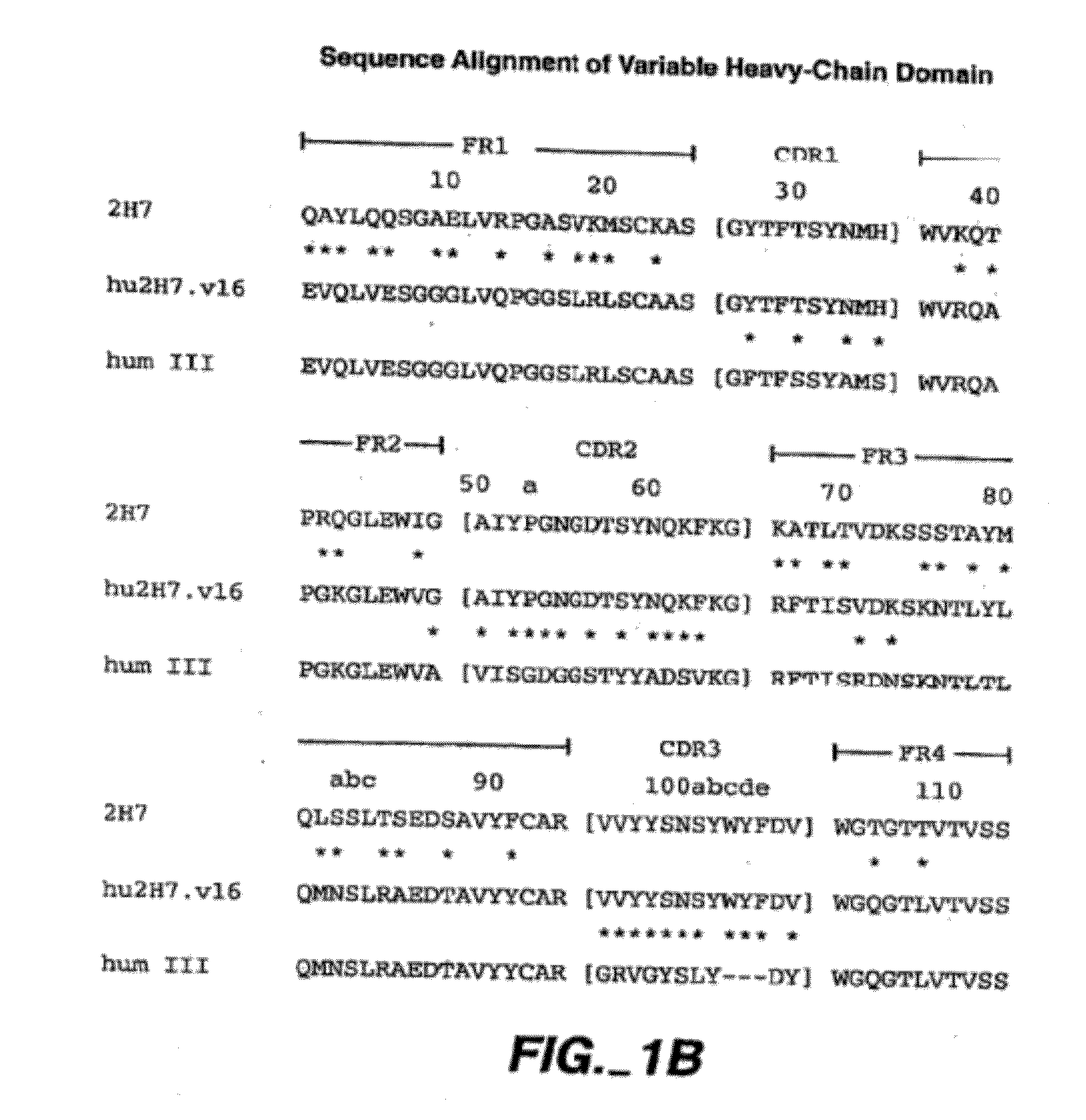Methods for treating progressive multiple sclerosis
a progressive multiple sclerosis and treatment method technology, applied in the field of progressive multiple sclerosis treatment, can solve the problems of reducing known beneficial treatments, and the treatment approach based on this theory, and not fully preventing the occurrence of exacerbation or accumulation of disability
- Summary
- Abstract
- Description
- Claims
- Application Information
AI Technical Summary
Benefits of technology
Problems solved by technology
Method used
Image
Examples
example 2
A Phase II / III Study of Rituximab in Primary Progressive Multiple Sclerosis (PPMS)
[0400]A randomized, double-blind, parallel group, placebo controlled, multicenter Phase II / III study (U2786g) to evaluate the safety and efficacy of rituximab in adults with Primary Progressive Multiple Sclerosis (PPMS) as defined by McDonald et al (Ann Neurol 50:121-7 (2001)) was performed.
[0401]Subjects were randomized in a 2:1 ratio to receive either rituximab or placebo. Rituximab, commercially available from Genentech, was formulated for i.v. administration as a sterile product in 9.0 mg / ml sodium chloride, 0.7 mg / ml polysorbate 80, 7.35 mg / ml sodium citrate dehydrate, and sterile water for injection (pH 6.5). Each course of study drug consisted of two i.v. infusions (separated by 14 days) of 1000 mg rituximab or placebo. Subjects received the first course of treatment at Days 1 and 15 and received additional courses at Weeks 24, 48, and 72. Subjects received acetaminophen (1 g) and diphenhydramin...
example 3
A Phase III Study of Ocrelizumab in Progressive Multiple Sclerosis
[0415]A Phase III, randomized, double-blind, parallel-group, multicenter study to evaluate the safety and efficacy of 600 mg of ocrelizumab as compared with placebo in adults with progressive MS is performed.
[0416]A total of 630 progressive MS patients (315 with progressive onset and 315 with relapsing onset MS) are enrolled and assigned (2:1 randomization) to either ocrelizumab arm or placebo arm stratified by site and type of multiple sclerosis. This study consists of the following three periods that apply to all patients: a screening period, a treatment period and a treatment free follow up period. In the first course of study drug treatment (300 mg ocrelizumab or placebo infusion×2) are administered on Days 1 and 15. In subsequent treatment courses, patients are dosed (600 mg ocrelizumab single infusion) every 24 weeks until the last patient enrolled receives his / her last course of treatment to be administered at ...
example 4
A Phase III Study of Ocrelizumab in Primary Progressive Multiple Sclerosis
[0435]A Phase III, randomized, double-blind, parallel-group, multicenter study to evaluate the safety and efficacy of one of two dose regimens of ocrelizumab as compared with placebo in adults with primary progressive MS is performed.
[0436]The two ocrelizumab dose regimens under investigation are as follows: 1) ocrelizumab 1000 mg dose regimen: consisting of a dual infusion of 1000 mg for the first treatment cycle followed by single infusions of 1000 mg for the subsequent treatment cycles and 2) ocrelizumab 600 mg dose regimen: consisting of a dual infusion of 300 mg for the first treatment cycle followed by single infusions of 600 mg for the subsequent treatment cycles.
[0437]A total of 630 primary progressive MS patients are enrolled and assigned (2:1 randomization) to either ocrelizumab arm or placebo arm stratified by site and type of multiple sclerosis. This study consists of the following three periods th...
PUM
| Property | Measurement | Unit |
|---|---|---|
| time | aaaaa | aaaaa |
| time | aaaaa | aaaaa |
| time | aaaaa | aaaaa |
Abstract
Description
Claims
Application Information
 Login to View More
Login to View More - R&D
- Intellectual Property
- Life Sciences
- Materials
- Tech Scout
- Unparalleled Data Quality
- Higher Quality Content
- 60% Fewer Hallucinations
Browse by: Latest US Patents, China's latest patents, Technical Efficacy Thesaurus, Application Domain, Technology Topic, Popular Technical Reports.
© 2025 PatSnap. All rights reserved.Legal|Privacy policy|Modern Slavery Act Transparency Statement|Sitemap|About US| Contact US: help@patsnap.com



